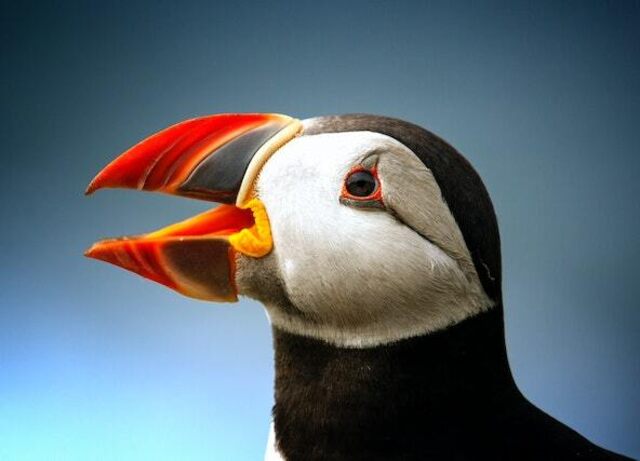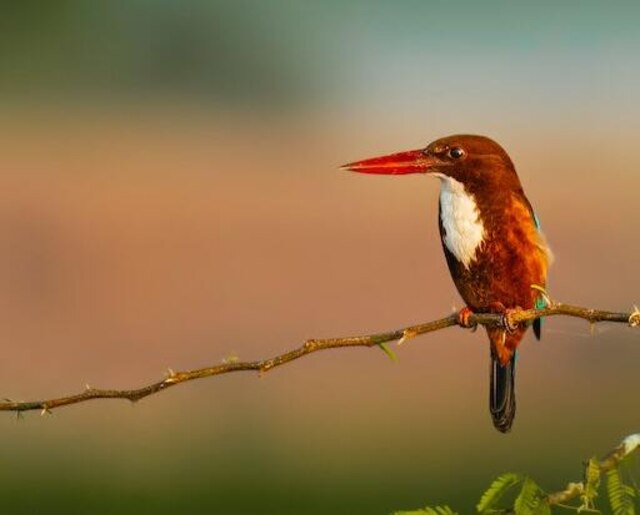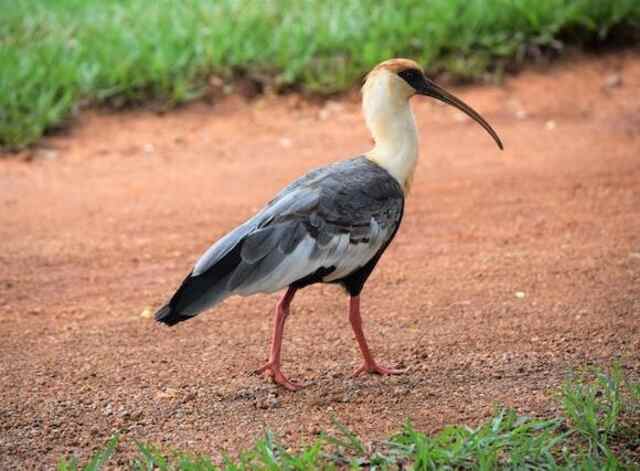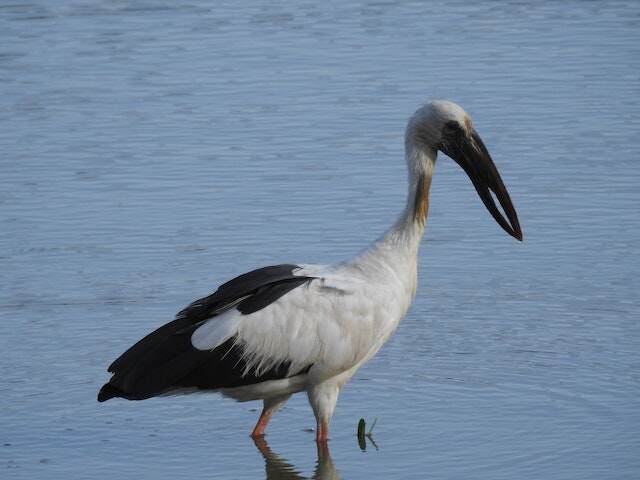Birds are fascinating creatures with a variety of unique characteristics, one of which is their beaks. The beak of a bird is not just a tool for eating, but also plays a crucial role in other aspects of their life, such as communication, defense, and foraging.
The beak also serves as an important indicator of the bird’s overall health, as any malformation or damage to the beak can severely impact their ability to survive in the wild.
Like the leaves on a tree, the beak of a bird is a constant fixture, always present and always growing. But unlike the leaves, the beak of a bird is not shed and regrown each year.
Instead, the beak is a permanent feature that continually grows and changes throughout the bird’s life. In this article, we delve into the intriguing realm of bird beaks to address the question: “Do birds beaks keep growing?”
We examine the structure and function of bird beaks, the role of hormones in their development, and the influence of climate change on beak size.
Table of Contents
- 1 The Structure of Bird Beaks
- 2 The Importance of Beak Maintenance
- 3 The Relationship Between Beak Size and Diet
- 4 Beak Adaptations for Hunting and Foraging
- 5 Beak Adaptations for Defense and Communication
- 6 Factors that Influence Beak Growth
- 7 The Role of Hormones in Beak Development
- 8 Beak Growth in Domesticated Birds
- 9 The Impact of Climate Change on Beak Size
- 10 The Evolution of Bird Beaks Over Time
- 11 Frequently Asked Questions
- 12 Conclusion
- 13 Author
The Structure of Bird Beaks
The unique and diverse shapes of avian bills, akin to the varied forms of human tools, serve as a reflection of the adaptations and ecological niches of each species.
Beak evolution has produced a wide variety of beak morphologies and functions that enable birds to carry out a range of tasks, such as feeding, grooming, and defense.
The size, shape, and strength of a bird’s beak are determined by their feeding and living habits.
For instance, the beak of a woodpecker is long and chisel-like, allowing it to drill holes in trees to extract insects, while the beak of a hummingbird is thin and needle-like, enabling it to feed on nectar.
The diversity of beak adaptations is particularly evident in the Darwin’s finches of the Galápagos Islands, which have evolved different beak shapes to exploit different food sources.
The importance of beak maintenance is crucial as it ensures that the beak remains strong and functional throughout the bird’s life.
The Importance of Beak Maintenance
Regular maintenance of avian beaks is crucial in ensuring their proper function and survival, as neglecting this aspect may lead to hindered feeding abilities, reduced fitness, and potentially, death.
Beak hygiene is an essential component of beak maintenance, as it reduces the risk of bacterial infections that can cause beak injuries and malformations.
In some cases, beak trimming may be necessary to prevent overgrowth, which can interfere with feeding and grooming activities. However, this should only be done by trained professionals to avoid causing harm to the bird.
Beak care routines should also be tailored to the bird’s species and individual needs, taking into account factors such as diet, behavior, and environmental conditions.
By prioritizing beak maintenance, bird owners and wildlife managers can help ensure that birds have the best chance of survival and thriving in their natural habitats.
The importance of beak maintenance is particularly relevant in the context of the relationship between beak size and diet, which will be explored in the subsequent section.
The Relationship Between Beak Size and Diet
Understanding the correlation between the size of a bird’s beak and its diet is a crucial aspect of avian biology that sheds light on the evolutionary adaptations of birds to their respective environments.
Beak size and function are closely related, and the diversity of beaks in birds reflects their varied feeding habits. For example, birds with long, thin beaks are often insect-eaters, while those with short, thick beaks are seed-eaters.
Beak shape and feeding behavior are also intricately linked, with birds that feed on nectar having long, curved beaks, and those that pry open shells having strong, pointed beaks.
Beak size and geography also play a role in shaping beak evolution and speciation, with birds in different regions adapting to different types of food sources.
A table showing the different beak shapes and sizes of birds, along with their corresponding feeding habits, can evoke an emotional response in the audience, as it highlights the incredible diversity and adaptability of these animals.
This diversity is further reflected in the adaptations of bird beaks for hunting and foraging, which will be explored in the subsequent section.
| Bird Species | Beak Shape | Beak Size | Feeding Habits |
|---|---|---|---|
| Hummingbird | Needle-like | Small | Nectar extraction, hovering feeding |
| Eagle | Hooked | Large | Carnivorous, tearing flesh |
| Finch | Conical | Medium | Seed-cracking, foraging on the ground |
| Pelican | Pouch-like | Large | Scooping fish from water |
| Woodpecker | Chisel-like | Medium | Drilling into wood for insects |
| Toucan | Long, curved | Large | Fruit-eating, reaching into tree branches |
| Heron | Dagger-like | Long | Spear-fishing, catching small aquatic prey |
| Flamingo | Filter-like | Long, slender | Filter-feeding on algae and small organisms |
This table showcases the diverse range of beak shapes and sizes found in birds, along with their corresponding feeding habits. It demonstrates the remarkable adaptability of birds to various ecological niches, evoking an emotional response by highlighting their incredible diversity and specialized feeding strategies.
Beak Adaptations for Hunting and Foraging
An exploration of beak adaptations for hunting and foraging in birds sheds light on the incredible diversity of strategies that these animals have developed to obtain their food.
Beak strength plays a vital role in prey capture, and birds have evolved different beak shapes and sizes to suit their specific foraging techniques.
For example, some birds have long, curved beaks that allow them to probe deep into the ground or crevices to extract insects or other small prey.
Others have sharp, pointed beaks that they use to impale their prey, while still others have strong, sturdy beaks that allow them to crack open nuts and seeds.
Beak curvature also plays a significant role in feeding behavior, with some birds using their curved beaks to extract nectar from flowers or fruits.
Overall, the diversity of beak adaptations in birds is a testament to the incredible evolutionary pressures that these animals face in their quest for food.
In the subsequent section about ‘beak adaptations for defense and communication,’ we will explore how birds have also developed specialized beak structures to protect themselves from predators and to communicate with their peers.
Beak Adaptations for Defense and Communication
The formidable beak adaptations that birds have developed for defense and communication include specialized structures that serve to protect them from predators and to convey complex information to their conspecifics.
Defense strategies involve the development of sharp, pointed beaks that can inflict serious harm on predators, as well as the ability to use their beaks to shield themselves from attacks.
Vocalization signals are also an essential means of communication for birds, with beak adaptations that enable them to produce unique calls and songs that convey specific messages to their mates or other members of their species.
Courtship rituals often involve elaborate displays of beak posturing, with males using their beaks to impress potential mates.
Predatory instincts can also be influenced by the shape and size of a bird’s beak, with some species having adapted long, sharp beaks that allow them to more effectively capture prey.
Finally, environmental factors such as the availability of food and the climate can influence the development of a bird’s beak, with some species evolving beak shapes that are better suited to their specific ecological niche.
These factors will be explored in more detail in the subsequent section about ‘factors that influence beak growth.’
Factors that Influence Beak Growth
Factors such as diet, hunting behavior, and evolution can greatly influence the growth and development of a bird’s beak.
A bird’s diet can affect the shape and size of its beak, with certain foods requiring a more specialized beak structure.
Hunting behavior can also play a role, as birds that use their beaks more frequently for prey capture may have stronger and more durable beaks.
Additionally, evolutionary adaptations can lead to changes in beak size and shape over time.
However, one of the most important factors in beak growth and development is the role of hormones.
Hormones such as testosterone and estrogen can influence beak size and shape, as well as the development of beak coloration and pattern.
In the next section, we will explore the specific ways in which hormones contribute to beak development.
The Role of Hormones in Beak Development
Hormones play a crucial role in the growth and development of avian beaks, affecting their size, shape, and coloration.
Hormonal regulation of beak morphology is a complex process that is influenced by developmental stages, genetic control, and environmental factors.
For instance, the thyroid hormone is known to play a significant role in beak development in birds. It regulates the growth and differentiation of beak cells, leading to changes in the size and shape of the beak.
Similarly, the pituitary gland produces hormones that control the growth of the beak during embryonic development.
Environmental factors such as temperature, light, and food availability also affect hormonal regulation of beak growth.
In summary, hormones are essential in the regulation of beak development in birds, and their effects are influenced by various developmental and environmental factors.
The next section will discuss beak growth in domesticated birds.
Beak Growth in Domesticated Birds
Understanding the growth patterns and potential developmental abnormalities of beaks in domesticated avian species is crucial to ensure their welfare in captivity.
Beak trimming, nutritional deficiencies, genetic mutations, aging effects, and veterinary interventions are all factors that can affect the growth of beaks in domesticated birds.
Beak trimming is a common practice used to prevent birds from harming themselves or others, but it can also affect the growth and development of their beaks.
Nutritional deficiencies can lead to stunted or abnormal beak growth, while genetic mutations can cause deformities such as crossed beaks.
Aging effects can also cause changes in beak size and shape.
Veterinary interventions, such as surgery or medication, may be necessary in cases of beak abnormalities.
It is important to monitor the growth and development of beaks in domesticated birds to ensure their health and well-being.
The impact of climate change on beak size is also a significant issue that will be discussed in the subsequent section.
The Impact of Climate Change on Beak Size
The impact of climate change on avian morphology has gained significant attention in recent years, particularly in relation to the potential effects on beak size.
Beak size variation in birds is a crucial trait that facilitates the acquisition of food and adaptation to different environmental conditions.
As a result, alterations in beak size can lead to ecological consequences for bird species.
Here are some of the ways climate change can impact beak size variation in birds:
- Changes in temperature and precipitation patterns can affect the availability and distribution of food resources, which in turn can influence beak size evolution.
- Extreme weather events such as droughts or floods can exert selective pressure on birds, leading to changes in beak size over time.
- Human activities associated with climate change, such as deforestation or urbanization, can alter bird habitats and food resources, which can result in beak size variation.
- Some bird species may adapt to changing climatic conditions by altering their foraging behavior, which can affect beak size evolution.
- Natural selection may favor birds with larger or smaller beaks depending on the specific environmental conditions, leading to shifts in beak size over generations.
Understanding the ecological and evolutionary consequences of climate change on beak size variation in birds is crucial for predicting the long-term consequences of environmental adaptation. The next section will delve into the evolution of bird beaks over time.
The Evolution of Bird Beaks Over Time
The impact of climate change on beak size is just one aspect of the broader topic of bird beak evolution.
The evolution of bird beaks over time is a fascinating area of study that encompasses the fields of adaptive radiation, selective pressure, functional morphology, convergent evolution, and ecological niche.
Bird beaks have evolved over millions of years in response to changes in environmental conditions, such as food availability, competition, and predation.
Some bird species have developed specialized beaks that allow them to feed on specific types of food, while others have more generalized beaks that allow them to feed on a variety of foods.
The study of bird beak evolution is crucial for understanding how different species adapt to their environments and how they may respond to future environmental changes.
Frequently Asked Questions
How do birds use their beaks to attract mates?
Like a painter’s brush or a sculptor’s chisel, a bird’s beak is a tool of great importance, with the ability to attract mates being just one of its many functions.
Beak modifications play a crucial role in sound production, which is used by birds to communicate with each other during courtship.
Sexual selection has led to the evolution of beak coloration, with brighter and more vibrant colors being favored by potential mates.
The morphology of the beak also plays a role in mate selection, with certain shapes and sizes being preferred by different species.
Overall, the beak is a multifaceted tool that has adapted to meet the specific needs of each bird species in its quest to attract a mate and reproduce successfully.
Can beak growth be influenced by a bird’s age?
The growth of a bird’s beak can be influenced by various factors such as nutrient requirements, environmental factors, genetics influence, beak maintenance, and diet diversity.
Nutrient deficiencies can lead to slower growth or deformities in the beak.
Environmental factors such as temperature and humidity can also affect beak growth.
Genetics play a role in determining the size and shape of a bird’s beak.
Beak maintenance, including wearing down and regrowth, also affects beak length.
Finally, diet diversity is essential to ensure proper nutrition and beak growth.
While beak growth slows down as birds age, it is not accurate to say that the beaks keep growing throughout their lifespan.
Do all bird species have beaks?
Bird beak evolution has led to the development of numerous beak adaptations that enable the birds to perform various functions such as cracking nuts, probing into flowers for nectar, catching prey, and even filtering water.
The morphology of the beak differs from one bird species to another, and this diversity is attributed to the different ecological niches they occupy.
Beak functionality is also influenced by the bird’s diet, and this has resulted in the development of specialized beak structures that are adapted to different types of food.
Despite the variations in beak morphology and function, all bird species possess beaks, which are a defining characteristic of birds.
Can beak growth be stunted or slowed down?
Bird beak growth can be influenced by a variety of factors, including environmental factors, nutritional influence, genetic mutations, beak trimming, and medical intervention.
Environmental factors, such as weather conditions and food availability, can affect the growth rate and size of a bird’s beak.
Nutritional influence plays a crucial role in the development and maintenance of a healthy beak.
Genetic mutations can result in abnormalities in beak growth, such as overgrowth or undergrowth.
Beak trimming is a controversial practice that can stunt beak growth, but it can also cause pain and discomfort to the bird.
Medical intervention may be necessary in cases of abnormal beak growth or injury.
Understanding the various factors that affect beak growth can help us better care for and protect our avian companions.
How do birds with different beak sizes interact with each other in the wild?
Birds with different beak sizes exhibit feeding adaptations that allow them to efficiently exploit different types of resources, thereby reducing resource competition.
This process, known as niche partitioning, enables coexistence between species with similar ecological requirements.
Symmetrical scaling refers to the proportional increase in beak size with body size, which enhances feeding efficiency.
Sexual selection can also play a role in beak size, with some species exhibiting exaggerated traits that increase their mating success.
In the wild, birds with different beak sizes interact through varying degrees of competition and cooperation, depending on the availability of resources.
Overall, the study of beak size and its relationship to feeding adaptation provides valuable insights into the ecological dynamics of avian communities.
Conclusion
The beaks of birds are an important and complex structure that is used for a variety of purposes, including hunting, foraging, communication, and defense.
The size, shape, and strength of a bird’s beak are determined by a range of factors, including genetics, hormones, and diet.
While some species have beaks that remain relatively constant in size throughout their lives, others experience continuous growth, with the length and shape of the beak changing over time.
One interesting statistic about bird beaks is the impact of climate change on their size. Researchers have found that as temperatures rise, the beaks of some bird species are getting shorter and smaller.
This is likely due to a combination of factors, including changes in food availability and competition for resources.
For example, a study of Darwin’s finches in the Galápagos Islands found that during a period of drought, the beaks of the birds became smaller, allowing them to better access the available food supply.
This adaptation shows how bird beaks can change in response to environmental pressures, and it highlights the importance of understanding the complex relationship between birds and their habitats.
In conclusion, bird beaks are a fascinating and important aspect of avian biology, and they play a crucial role in the survival and success of bird species around the world.
From the adaptations of Darwin’s finches to the growth patterns of domesticated birds, there is much to be learned about the complex and varied world of bird beaks.
As climate change continues to impact the planet, it will be interesting to see how bird beaks continue to evolve and adapt to changing conditions, and what insights this can provide into the intricate workings of the natural world.









